Tripping 2019
Second day of booked Beijing city tour covering:
1) Jingshan Park - lovely huge garden area, lots of trees colour coded according to age, some with amazing red/grey/green stippled bark, fruit trees, loads of flower beds. Persimmons, peonies, box hedging, clover, ornamental pines are a few we recognised. People gather here to exercise, socialise, some dipping giant sized paint brushes in water to practice painting the ancient Chinese characters on the paths. Of the 11,000 original characters, 8,000 main ones are used with 3,000 in regular use. Q: How does that compare to English noting each character is a word, not a letter? A: 171,476 words in English language.
2) Jinghshan Mountain - yep more steps but evenly spaced and still cool in the early morning breeze. This is a man made mountain constructed in 1406 from the dig out for the massive moat around the Forbidden City.
3) The Summer Palace, dates back to 1153 Jin dynasty with buildings first built 1749, rebuilt early 1900’s after being destroyed during Opium Wars of 1840’s (Britain) and 1860’s
Beijing - day three
June 12, 2019
|
Beijing
Second day of booked Beijing city tour covering:
1) Jingshan Park - lovely huge garden area, lots of trees colour coded according to age, some with amazing red/grey/green stippled bark, fruit trees, loads of flower beds. Persimmons, peonies, box hedging, clover, ornamental pines are a few we recognised. People gather here to exercise, socialise, some dipping giant sized paint brushes in water to practice painting the ancient Chinese characters on the paths. Of the 11,000 original characters, 8,000 main ones are used with 3,000 in regular use. Q: How does that compare to English noting each character is a word, not a letter? A: 171,476 words in English language.
2) Jinghshan Mountain - yep more steps but evenly spaced and still cool in the early morning breeze. This is a man made mountain constructed in 1406 from the dig out for the massive moat around the Forbidden City.
3) The Summer Palace, dates back to 1153 Jin dynasty with buildings first built 1749, rebuilt early 1900’s after being destroyed during Opium Wars of 1840’s (Britain) and 1860’s
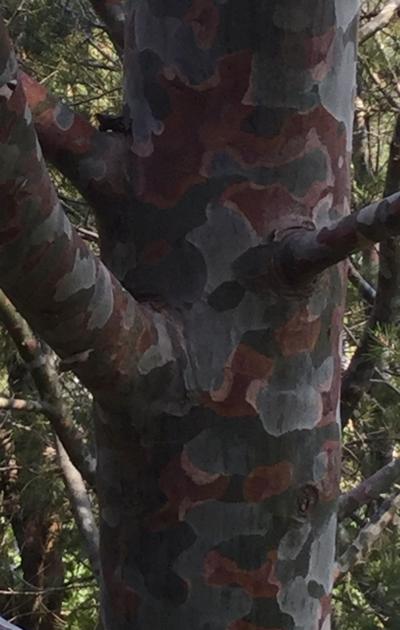
(Britain again, aided by France) who actively increased opium production to weaken the Chinese army. Summer home of 10 emperors and the Dragon Lady, concubine to the 8th emperor of the Qing Dynasty who became very powerful as the only one to produce a son for the emperor. Her son became 9th emperor and not wanting to relinquish power when he died from disease aged 19, she installed her nephew as the 10th Qing Dynasty Emperor but in name only as she kept all the power. Is this the history behind our use of the term Dragon Lady?
She exiled, then imprisoned her nephew for a total of 40 years before ordering him to be poisoned to death. She died soon after in 1908 aged 72, with the final dynasty ending in 1911 when the people demanded a better quality of life. A terrible period of corrupted leadership followed until Chairman Mao came to the rescue and the Republic of China was formed in 1949. During her period of control, the Dragon Lady raised loads of money to rebuild the army but used it to rebuild the summer place and gardens twice, 1890 and again in 1902 after they were destroyed by the Eight Nation Alliance set up to stop the Boxer Rebellion (Japan, Russia, Britain, France, US, Germany, Italy and Austria-Hungary). The vast area includes the 728

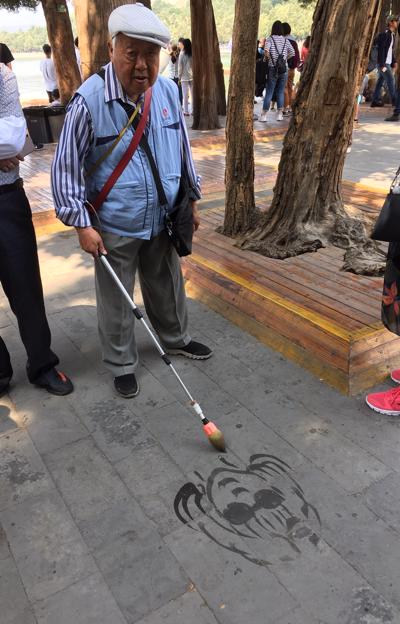
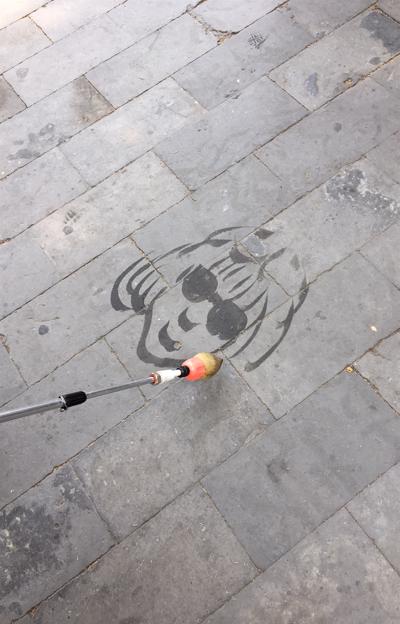

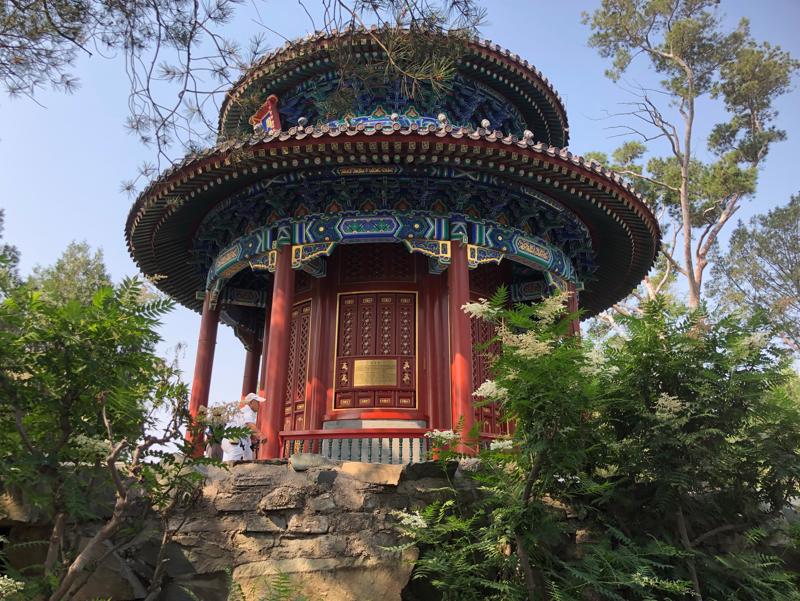

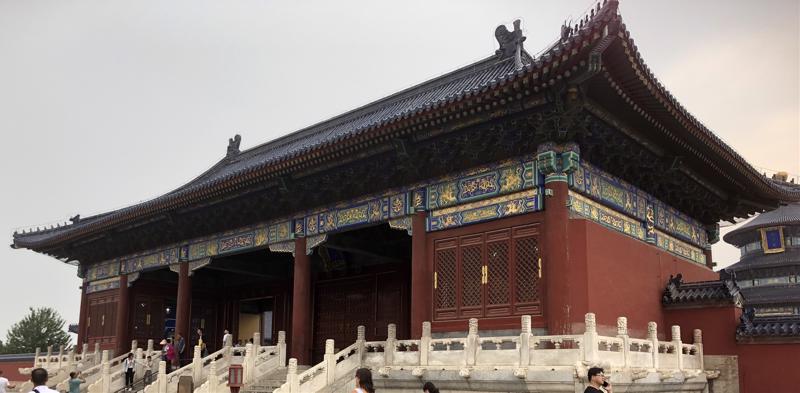
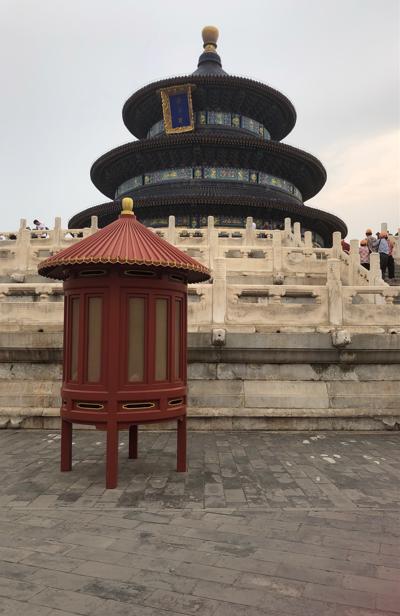

metre long outdoor corridor that we walked enjoying the 14,000 individual paintings along it and the man made Longevity Hill, created from the dig out to form the massive Kunming Lake we boated across. Concrete painting water artists were here too, one did an amazing portrait of me = quick photos before it dried.
4) 2008 Beijing Olympic’s venue developed after the thousands of people living in the area were paid or rehoused to clear the land. The ‘Birds Nest’ that we saw so much of during the Olympics coverage, can hold 96,000 people but is now hardly used. The whole area had a desolate shut down feel to it being heavily patrolled to keep the locals out. Hardly surprising the people consider it to be a waste of money as seems to be the norm for every country hosting the games.
5) Gate of Prayer for Good Harvests - the rectangular building with white balcony.
Previous two full page shots of The Temple of Heaven and this page of the sacrificial altar = phewh goats, not humans.
What an amazing mind blowing history lesson we have had across the 8 dynasties spanning 221AD to 1912 and 557 emperors.
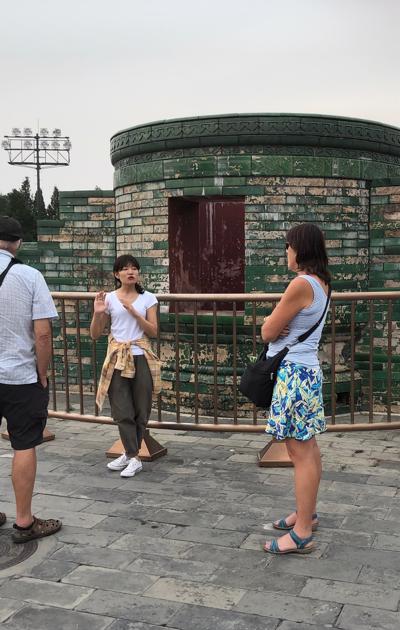
1.
Pre trip prep
2.
Where to this time?
3.
Beijing - day one
4.
Beijing - day two
5.
Beijing - day three
6.
Chinese delicacies
7.
This one is for you Finn
8.
Moving on to Germany
9.
Schloss Glücksburg
10.
Wacky signs
11.
Lisa and Kay’s wedding
12.
Nord Art
13.
Croatian food for a change
14.
Copenhagen, Zealand, Denmark
15.
Overnighting in Goteborg, Sweden
16.
Norway - the land of our forefathers
17.
From the sublime to the ridiculous
18.
And the road trip starts
19.
Trolling Trollstigen - Troll’s Footpath
20.
More wacky bits and bobs
21.
Stranda
22.
Ferries, alpine walking and loo capers
23.
Norway v New Zealand stats
24.
Island hopping across the Atlantic Road archipelago - another of the 11 must drives
25.
Little sods everywhere
26.
Another day another National Scenic Route
27.
Overnighting in Trondheim
28.
No fishing = time for Lom Stave Church
29.
What was that? Let’s go see.
30.
Nes Church, where Thore and Martha were married
31.
Tante Gerda
32.
Flying solo now
33.
Lisbon orientation walking tour
34.
One for you Madz
35.
Lisbon to Coimbra
36.
Out and about in Coimbra
37.
Porto - my Portugal favourite
38.
JK Rowling’s Hogwarts inspiration
39.
More of Porto and port tasting
40.
Tour group photos taken by Ana
41.
Mapping Portugal
42.
Home sweet home
43.
Tim & Karen UK’ing it
44.
Alfriston
45.
Hampton Court Palace
46.
Last leg
Share your travel adventures like this!
Create your own travel blog in one step
Share with friends and family to follow your journey
Easy set up, no technical knowledge needed and unlimited storage!